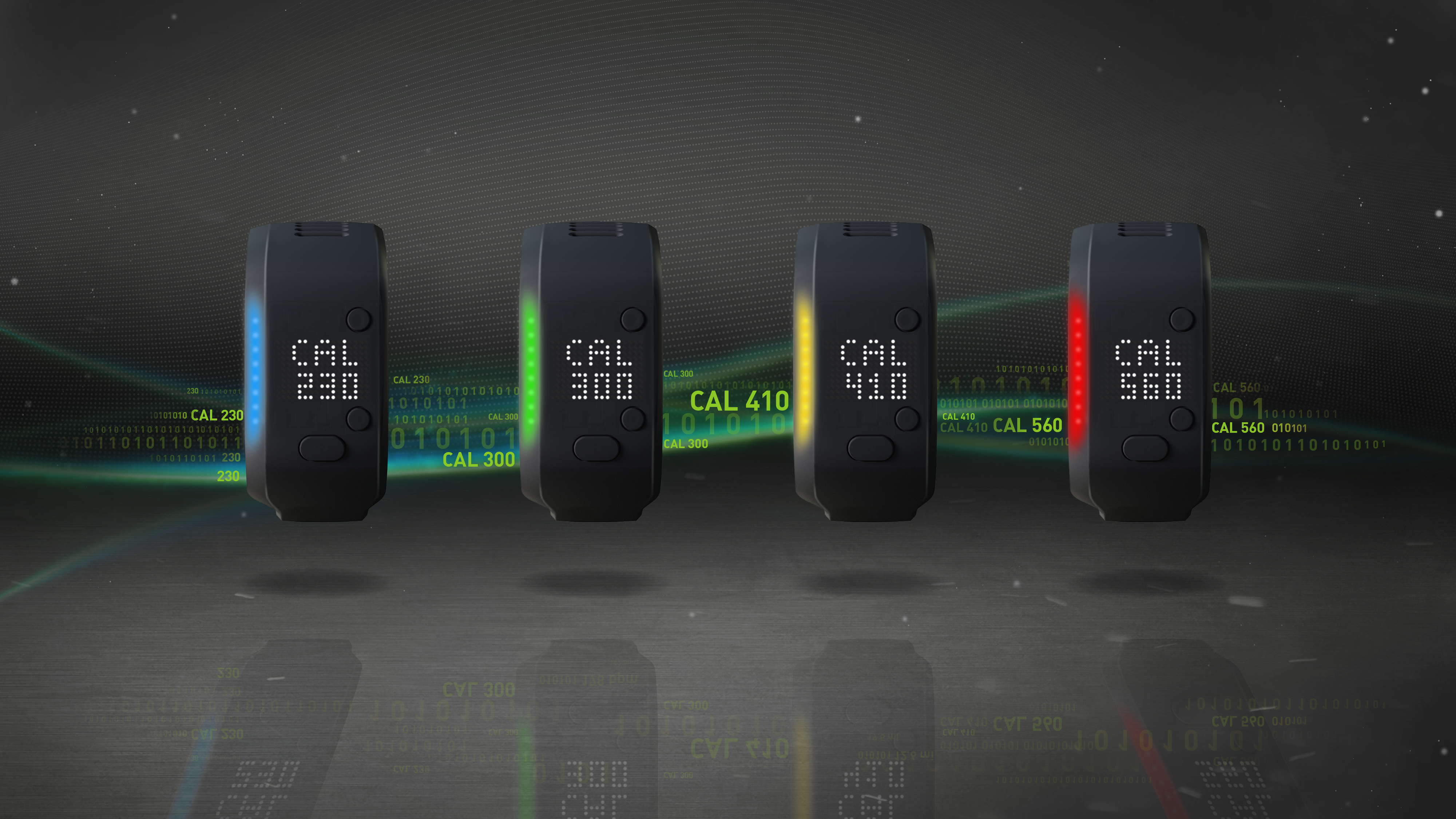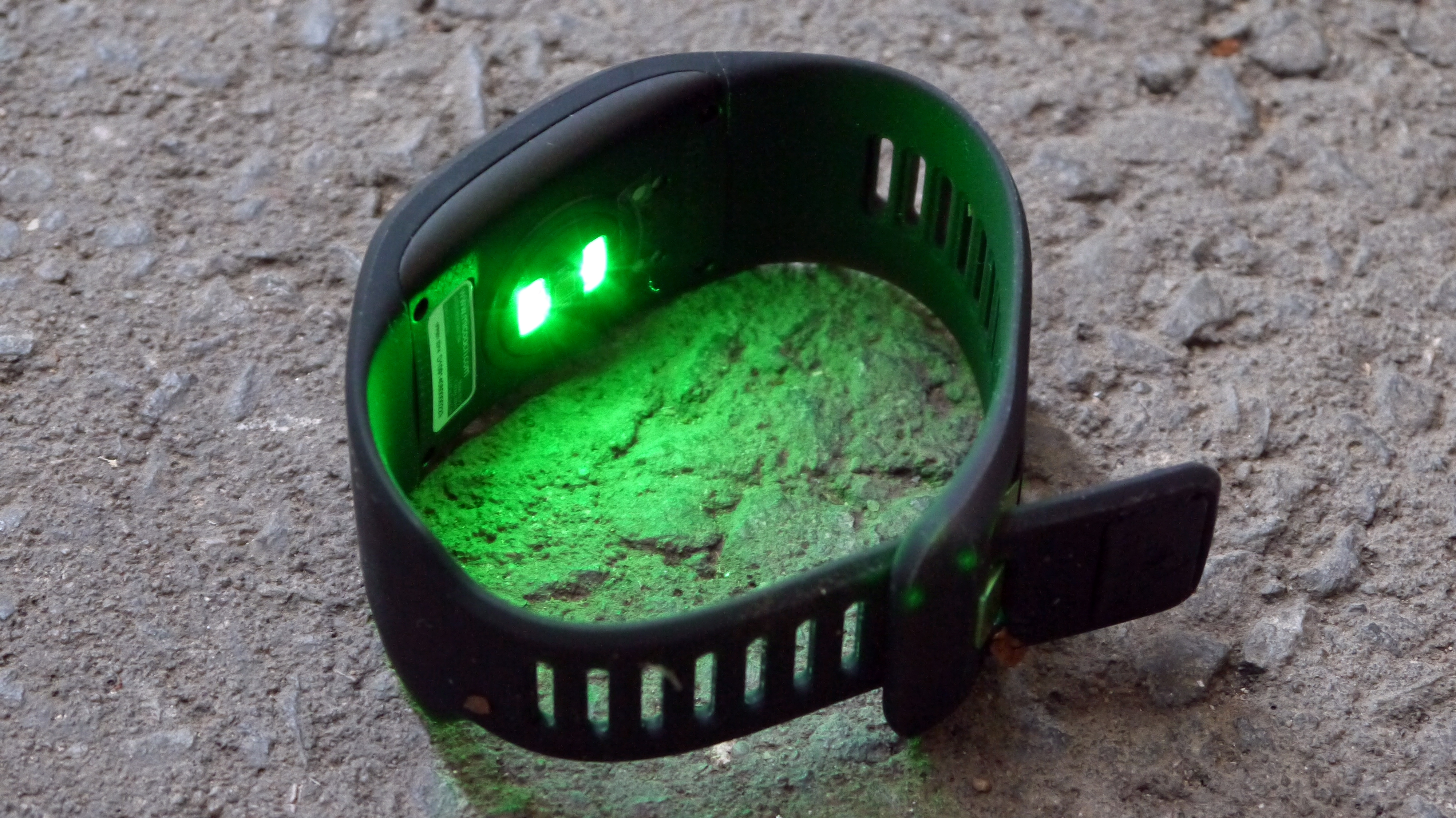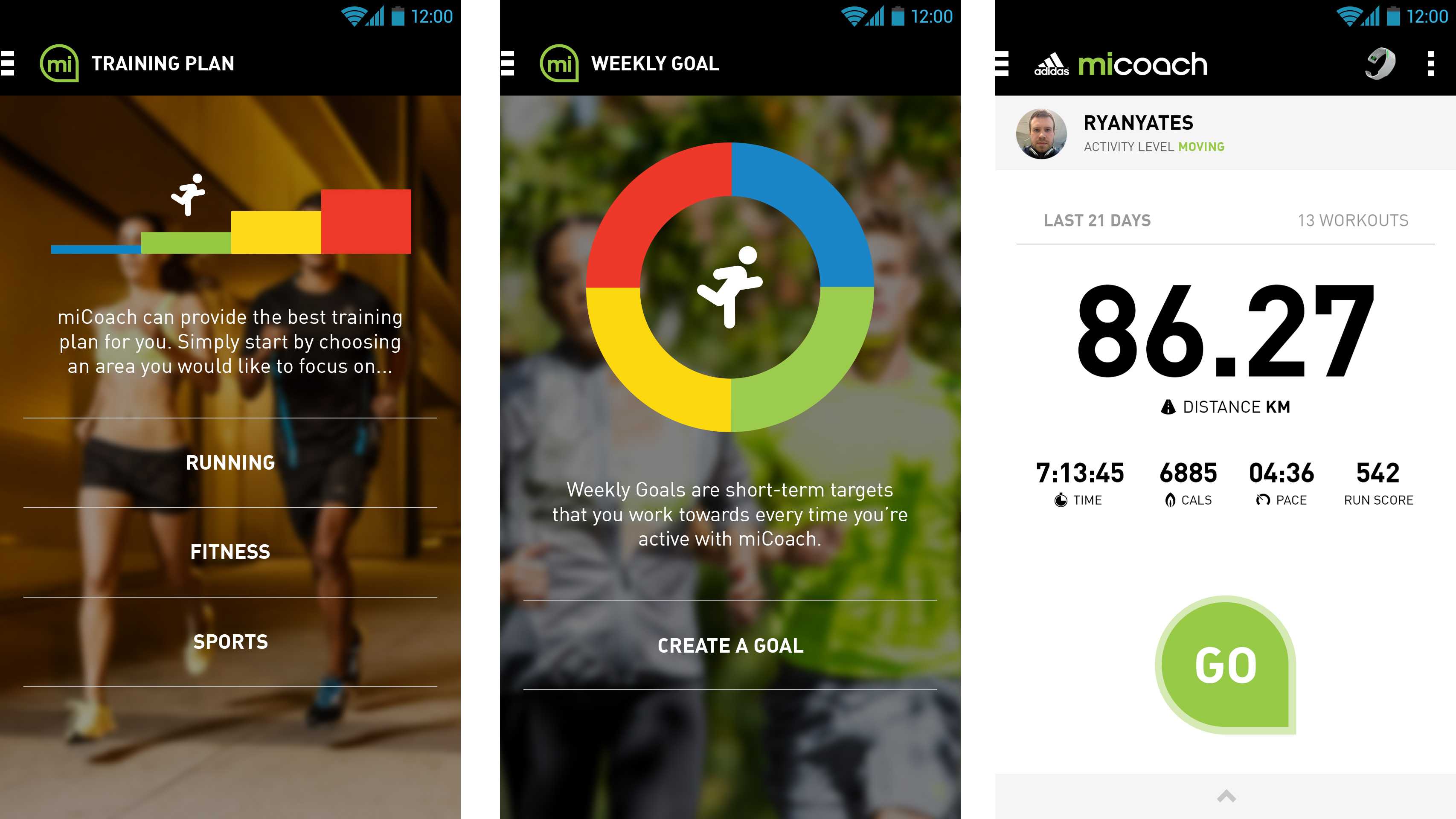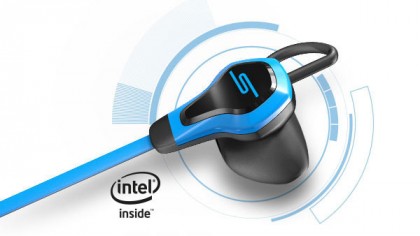10K a day: heart rate monitors for beginners

One of the hardest things about running long distances is deciding what comes with you: it needs to be no hindrance but still motivate you to push harder.
This week, I've been looking at two very different propositions, and both are aimed at the relative beginner with a bit of cash. Both packing heart rate sensors, they're designed to make you feel that you're doing it right when tramping the streets at speed. Or stumbling half-heartedly through a park, cursing every slight incline as a mountain into the very heart of Hades. Either attitude works.
Here's the key thing: a heart rate monitor will make you a better runner by letting you see what your body is really feeling.
If you're thinking that you're too tired to run, these little gadgets will help let you know if your engine is running too fast and you should ease back – and they also give you license to go faster when conditions are good).
Adidas FitSmart
The eagle-eyed among you will notice that this is very similar to the watch I reviewed last week: the Adidas SmartRun. The OCD sufferers will cringe at the name swap - surely SmartFit would have been better?
I quizzed Adidas on this, and was told the name was already taken, so this was the only way around. Fair enough.
The band/watch is something between a 'proper' GPS running tracker and a fitness band. The rubberised stylings mean it's comfortable to way day to day, and the LED lights are stylish and cool.
Sign up for breaking news, reviews, opinion, top tech deals, and more.

In fact the only irritation with the design is that the clock doesn't stay on, meaning you have to press the shallow main button (hard to hit on a run) to call up the clock.
On the back is the same optical heart rate monitor found on the SmartRun, allowing the band to work out just how hard you're running without having to resort to sky satellites.
However, the main difference between this and the larger watch is simple: this is aimed at the newer exerciser who wants some motivation to get out and run.
With that in mind, Adidas has created weekly targets, where you'll tell the app or website what you want to achieve (speed, endurance etc) and the fitness level that you're at.

You'll need to complete a 12-minute assessment, but after that it will know you. Your heart rate at different speeds, the different speed 'zones' themselves, your hopes, your dreams, your darkest secrets.
Well, perhaps only the first two.
From there, you're on your own. Get out and run, and as long as you spend the allotted time each week in the correct coloured zone, such as 1 hour in blue (warm up), all the way to 8 mins in the red (sprint) zone, you'll get a hefty pat on the back from the app after 7 days before helping you decide what's next.
And I'll admit it: that's pretty motivating. I found myself strapping it on and pushing a little harder in some runs just to get my red and yellow zone time up, which shows the idea works.
But I'm already comfortable going faster and slower at the right times - what Adidas has done here is confuse things for the newer runner.
How do you know when to sprint hard or take it easy? What does a yellow zone feel like?
In fairness, there are coloured LEDs on the band to let you know, but keeping your pace consistent is hard at times, especially at speed.
What's most frustrating is Adidas is brilliant at giving structured plans through its MiCoach app.
It could easily make a week's plan for you that, if followed, would give you correct amount of time in the right zones with prompts while running (through a buzz and helpful up and down arrow) to speed up or slow down, and yet that's not on offer.
There's also the issue of price: at £130, it's more expensive than many fitness bands and doesn't even track your progress.
Verdict
If Adidas can provide a little more information and leverage its excellent arsenal of training plans, the FitSmart could be a winner. Right now, it's a cool idea that needs more tweaking to be worth the tag price. Sorry, price tag.
Best for: the committed newbie
SMS Audio BioSport In-Ear Headphones
I love a good pair of headphones. It's best not to use them in a race (unless you're plodding along at the back) as you can be deaf to other runners trying to get past. But for training, there's nothing better than settling into a long run with a podcast or two, or a decent Spotify playlist and drifting off into a sweaty trance.
So when I heard about these SMS Audio BioSport headphones, I was massively intrigued. While the price of £129 was high, they do come with good technology in the shape of a heart rate monitor built in.

The heart rate coming from the ears is apparently one of the most accurate you can get (so say the medical doctor people) and these little ear-dwellers don't even need to be charged, drawing power through the headphone jack instead.
The design is nice: nothing overly stylish but the little wings look cool and the cord is a flat design that doesn't tangle.
Add in the control panel connected to the right ear wire that can both control calls and music (using a little slider) and these seem like winners.
The problem I have is that, unlike normal people, I have really shallow ears that don't allow in ear products like this to sit well without some sort of extra guard.
By my own poor standards, these earphones weren't easy to hold in the ear, despite trying a range of bud sizes. However, I found that testing them on others produced a good and comfortable fit with minimal chance of them falling out.
You'll need to be sure they're in snugly though, as without it the heart rate monitor will flip around and not give as accurate a reading as a dedicated chest strap.
While the packaging on the BioSport headphones promises to work with multiple sports apps, it seems only RunKeeper is supported right now - although you do get one month's free Elite membership, even if most people won't get the benefit in the first 30 days of running.
That's not a problem, given that it's a decent app with a good community and excellent user interface, especially for the newer, slower runner. But that doesn't give a lot of wiggle room if you're already tempted by something like Strava, which does support a plethora of sensors, so the omission is annoying.
The sound quality of the Bio Sport headphones is pretty good when they stay in. However, adding to the fit problem is the control panel. It's heavy and yanks at the ear with the heart rate monitor in, which can't help the accuracy - although did seem OK in tests.
Having to switch the little heart rate monitor on with a slider is OK at the start of a run, but if you want to take a call mid-trot you have to fumble and turn it off.
And with no volume control, it's not a super helpful thing to have pulling at your ear. The ability to skip tracks and pause songs is good, but most headphones will have that trick.
The range of supported phones needs improving too: while most iPhones are A-OK, there are only a smattering of compatible Android handsets, and big hitters like the HTC One M8 aren't there.
Verdict
In short, while I love the idea of these headphones they need to be made a little more robust and work with a greater variety of phones. The control panel needs to be shrunk (or moved away from the ear) and the heart rate tracking needs to actually work during vigorous exercise.
There's a good idea here, but the SMS Audio BioSport headphones aren't quite the finished product, especially for the higher price.
Best for: The RunKeeper fanatic desperate to run with a heart rate monitor

Gareth has been part of the consumer technology world in a career spanning three decades. He started life as a staff writer on the fledgling TechRadar, and has grew with the site (primarily as phones, tablets and wearables editor) until becoming Global Editor in Chief in 2018. Gareth has written over 4,000 articles for TechRadar, has contributed expert insight to a number of other publications, chaired panels on zeitgeist technologies, presented at the Gadget Show Live as well as representing the brand on TV and radio for multiple channels including Sky, BBC, ITV and Al-Jazeera. Passionate about fitness, he can bore anyone rigid about stress management, sleep tracking, heart rate variance as well as bemoaning something about the latest iPhone, Galaxy or OLED TV.